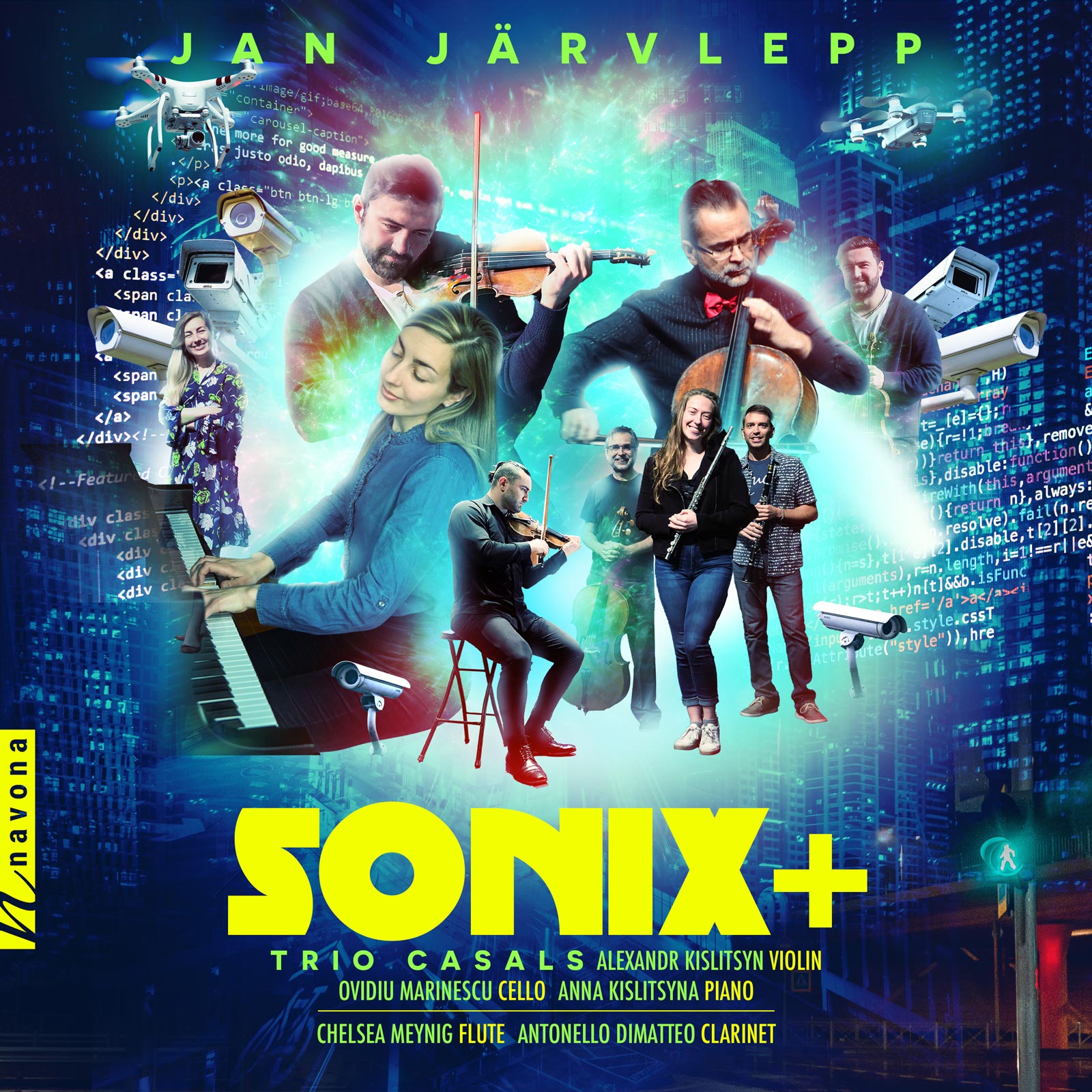
SONIX+ is a collection of new works from cellist and composer Jan Järvlepp that stand as some of his most creative and defiant. Järvlepp’s music is unrelenting, one-of-a-kind, and inspired — a well balanced blend of time-tested virtuosity spoken through modern themes.
Today, Jan is our featured artist on the “Inside Story,” a blog series exploring the inner workings and personalities of our composers and performers. Read on to learn about his first gig and the valuable lessons he learned in the process…
Tell us about your first performance.
My first gig took place at a camp counselor’s dance at Christie Lake Camp, on Christie Lake near Perth, Ontario, in late August, 1967 or 1968. I played lead guitar and sang some of the songs, which was probably not a joy to listen to. But I got to play the guitar solos, which is what really interested me. Our songs would have been three-chord wonders such as Louie, Louie, Wild Thing, Wipeout, Gloria, and songs based on 12-bar blues, such as some Chuck Berry numbers. I mean, I had only started playing two years earlier.
My classmate Moon played rhythm guitar. It was his first gig, too, but it turned out to be his last gig as well since he decided to leave music. He went on to own a shrimp farm in Central America. Our drummer, Tom, was so young that his feet didn’t reach the floor from the drummer’s stool. So he had to extend his toes forward in order to operate the bass drum and the hi-hat. Everyone found him to be very cute. But somehow he had learned to play the drums. I guess it didn’t hurt that his mother was a professional jazz organist. He became a member of the Canadian Armed Forces Central Band for many years and now plays gigs around town on drums and bass.
Tom’s older brother Terry supervised our rehearsals and provided a sound system for the vocal microphones. I had a cheap electric guitar and amplifier. I sort of resented this older guy telling us what to do. In retrospect, I realize that the gig would probably have been a disaster without his guidance. Terry played bass guitar and sang on the gig. He later left music and became a lawyer.
Tom’s father drove us to the gig. They were supposed to send us money for playing but somebody stole it. So I was robbed of $15 on my first gig. That doesn’t sound like much but back in those days gold cost $35 an ounce. That was actually a very good lesson because it caused me to be cautious about payments and agreements in the future.
So that event launched me on my rock n’ roll journey. I was very pleased with this gig and there was no looking back for me. The next month I entered Nepean High School and started playing cello in the grade 9 string class. So my pop/classical bi-cultural background was already being formed.
If you could collaborate with anyone, who would it be?
While I don’t have anyone specific in mind, I would like to collaborate on an ongoing basis with an excellent professional conductor who is as good at North American music as at European music. People like Marin Alsop, Giancarlo Guerrero, JoAnn Falletta, and Michael Tilson Thomas would be good examples. I could learn a lot this way. Unfortunately, premieres of my music are usually hastily prepared affairs with the majority of the rehearsal time going to the more “important” works on the program, which the players have already performed previously. So that makes it difficult to improve and to revise my scores based on good advice and experience.
I have been very pleased with the excellent recorded performances produced by PARMA Recordings with conductors such as Stanislav Vavrinek and Ivan Josip Skender. But I never get to see them again after the recording is made. Sometimes the recording session is done by Zoom or Skype, so I was really never there. So I guess it is the continuity and ongoing development which would be ideal for me.
How have your influences changed as you grow as a musician?
As a youngster I was enamored by pop music and thrilled by the live performances of Jimi Hendrix, Cream, the Who, Led Zeppelin, Frank Zappa, Mitch Ryder, Santana, the Mahavishnu Orchestra and the Beach Boys, as well as soul singers. I even saw Wilson Pickett twice on the same day and later again at the Ottawa Bluesfest. As I grew older I began to understand the limiting simplicity of pop song structures compared to the more elaborate and varied structures found in classical music. Unfortunately, many of the live classical performances that I heard while growing up were somewhat boring and uptight so the excitement of pop music tugged at me.
I came to realize that a simple verse/chorus/verse/chorus/guitar solo/verse/chorus/verse/chorus/fadeout form could never express what the most illustrious classical composers had done. Consider the tone poems of Richard Strauss and Sibelius, the three early ballets of Stravinsky, and extraordinary symphonic movements such as Mahler’s 10th Symphony Adagio. Pop music simply can’t generate those feelings and sonic effects, no matter how loud they turn up their amplifiers.
These days, I try to preserve the excitement of popular music rhythms while placing them in a more sophisticated classical type of form that doesn’t use predictable verses. I don’t follow strict classical sonata form but try to custom tailor each piece to fit the musical materials. My new recording, Sonix, would be a perfect example of that.
What advice would you give to your younger self if given the chance?
Good things don’t come to those that wait and the merit principle doesn’t work. The squeaky wheel gets the oil even if some other wheel needs the oil even more. Patience may be a virtue in some personal situations but waiting for merit to kick in, while inside of American culture, is an exercise in frustration. You really have to blow your own horn, especially in the field of music, which is an overcrowded market. Whether you are selling toothpaste, cars or music, the field is crowded and the best publicity campaign will lead to the most successful product, not merit. I won’t even mention political candidates.
If you sit around politely waiting for something, you’ll die first. So you have to be proactive and go for it, or as the Nike slogan says, “just do it.” So how does a musician do it? It is possible to be assertive and firm without being rude or violent. I’m still working on this and having some Navona Records releases on hand sure is a helpful promotional tool. I used to be kind of shy when I was younger and that did me no good. So I should make up for lost time.
I grew up in a European Lutheran family so my brother and I learned the Ten Commandments and were taught to have decent manners. But in the dog-eat-dog world of music and showbiz, it’s best to put aside such tasteful traditional influences and just go for it! That’s the advice of 70-year-old Jan.

Composer Jan Järvlepp creates a genuine European/American musical fusion by combining the excitement of rock and jazz rhythms with the large-scale classical structures found in orchestral and chamber music. The seriousness of his well-thought-out forms and the immediacy of contemporary rhythmic and melodic ideas make a potent brew that is appealing to both open-minded classical listeners and pop music listeners who are searching for something new.

